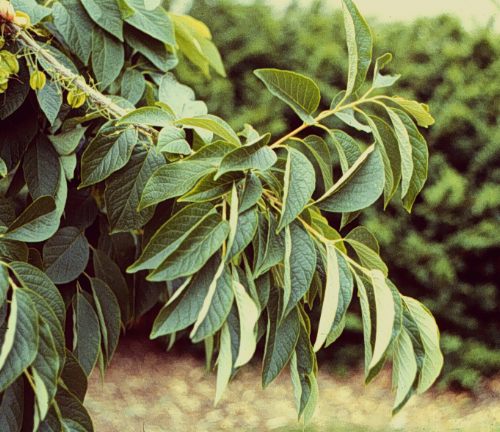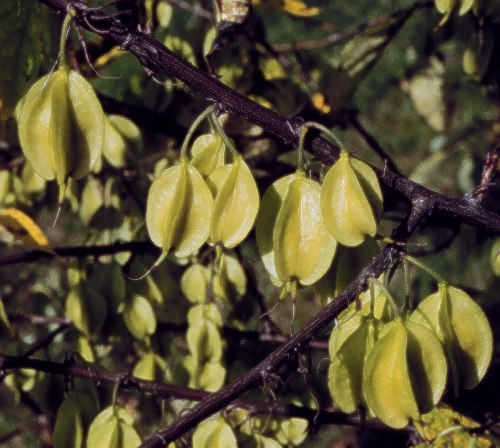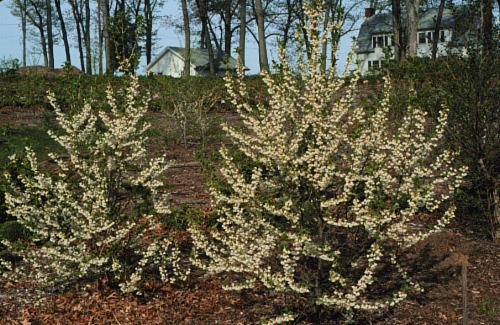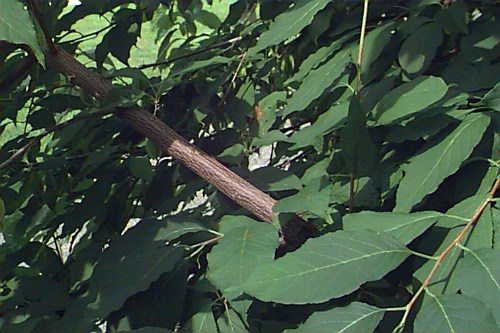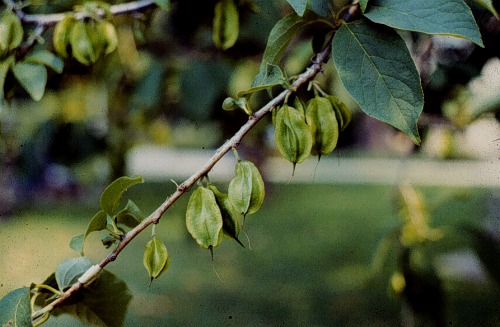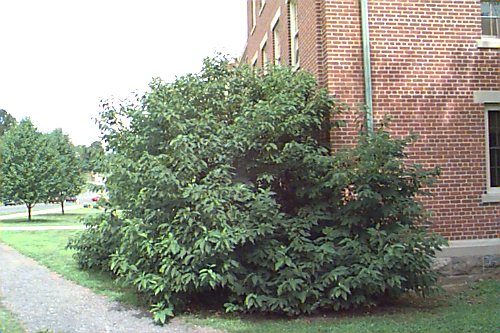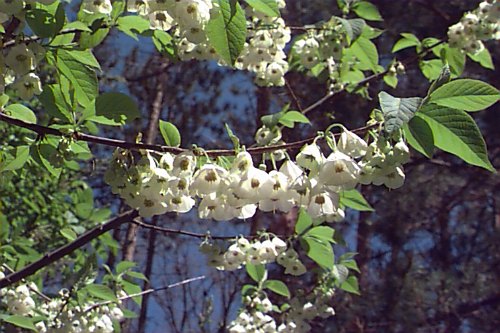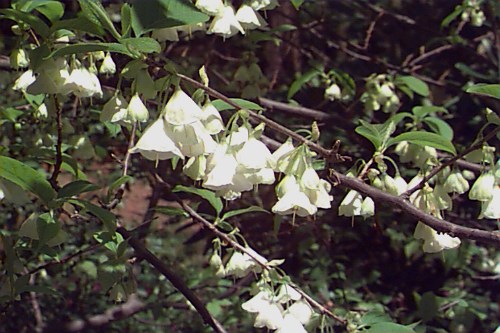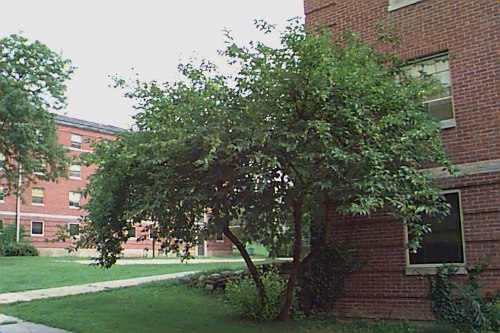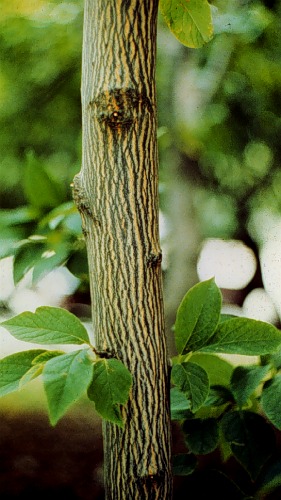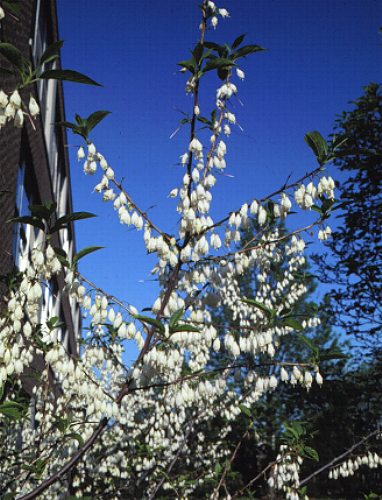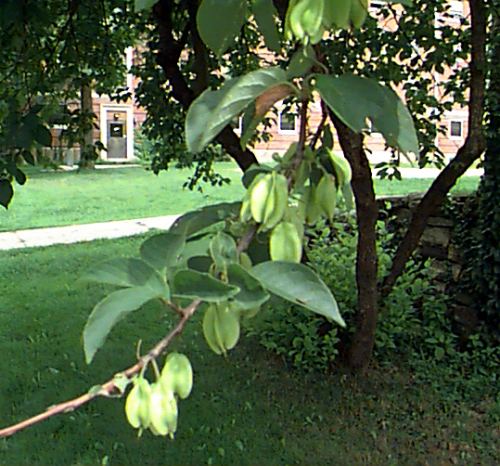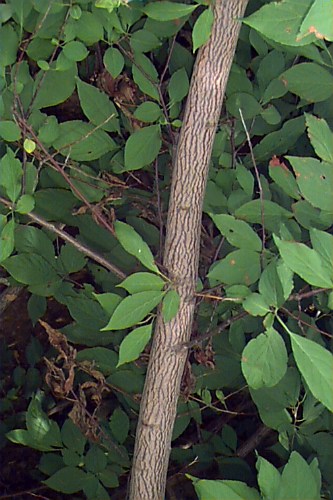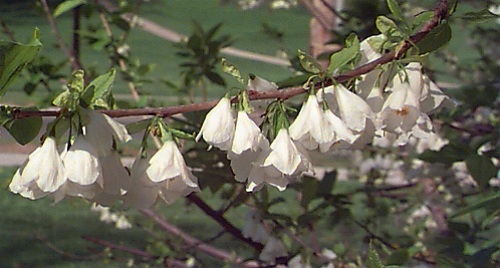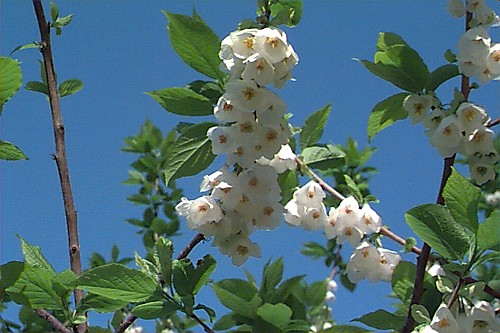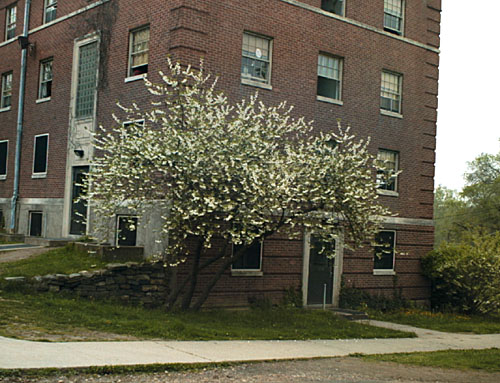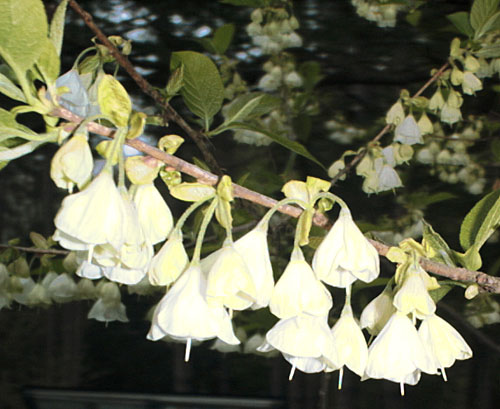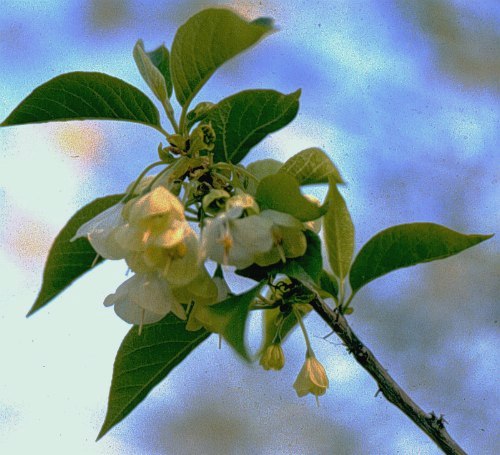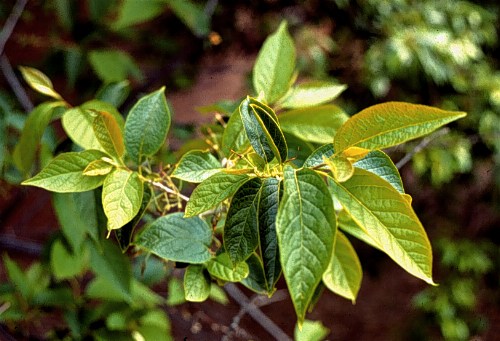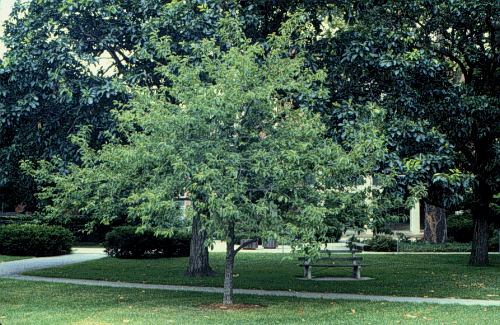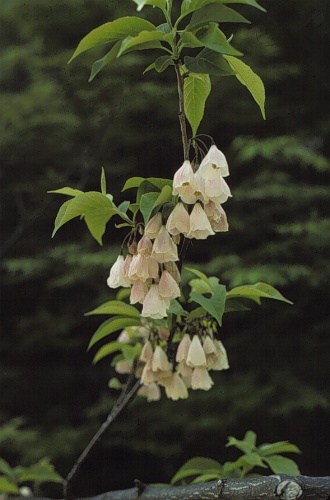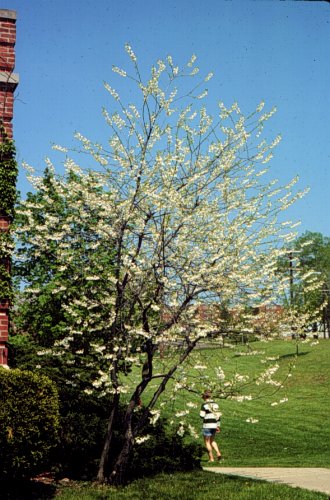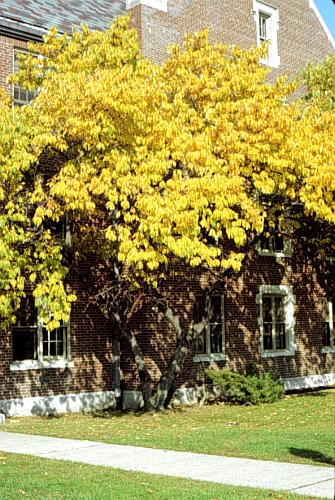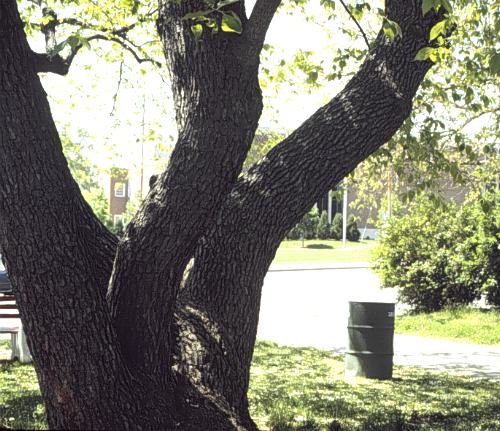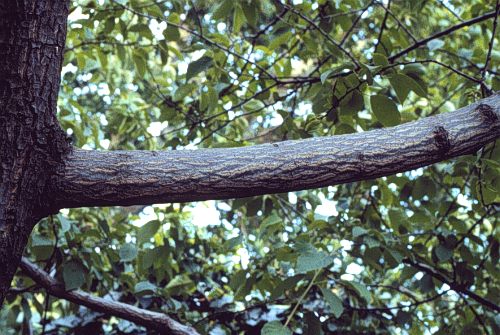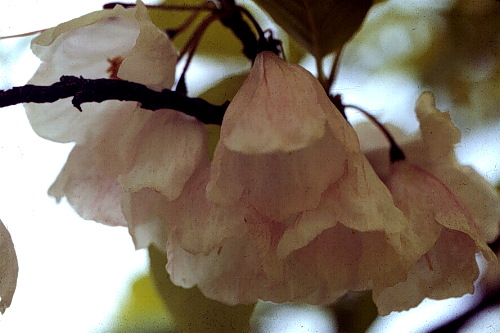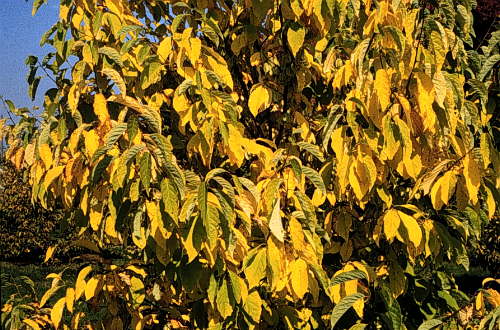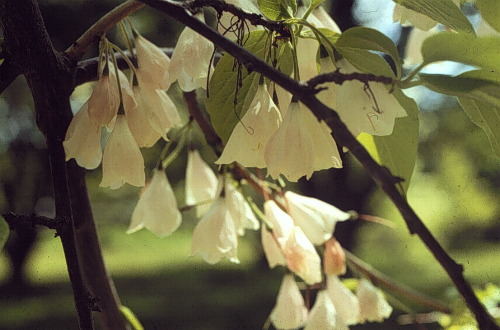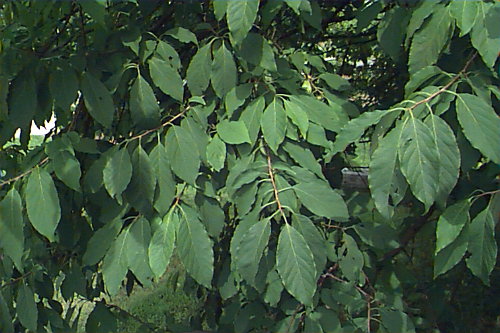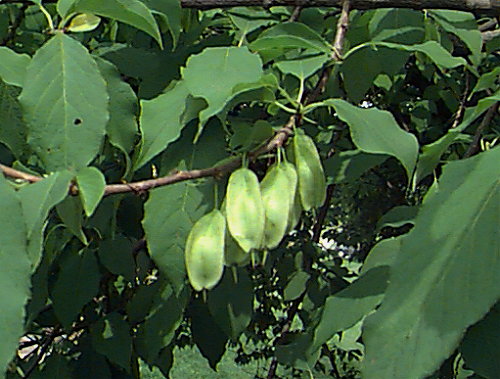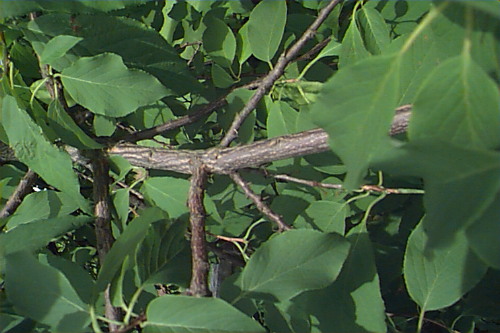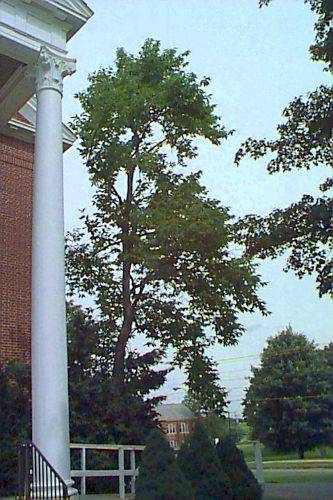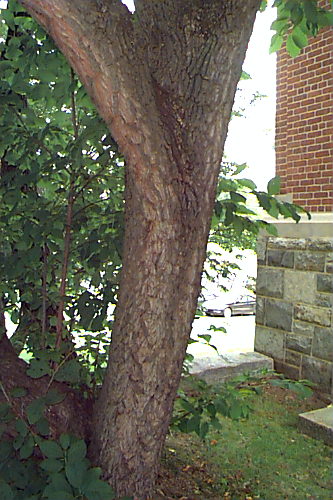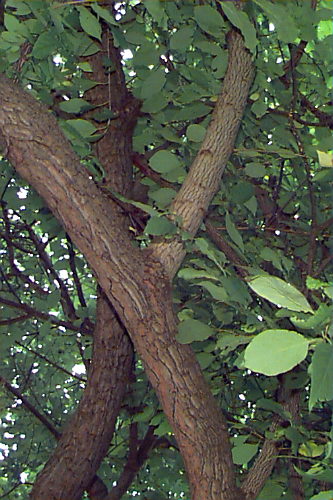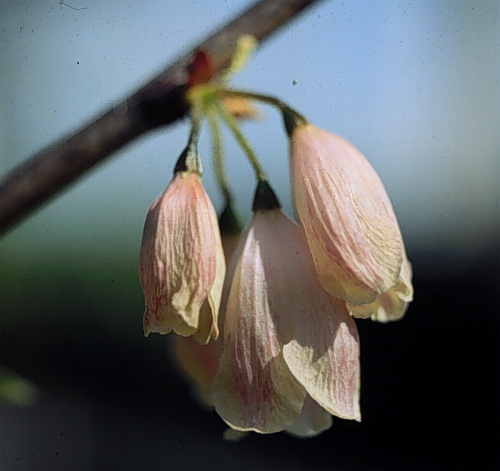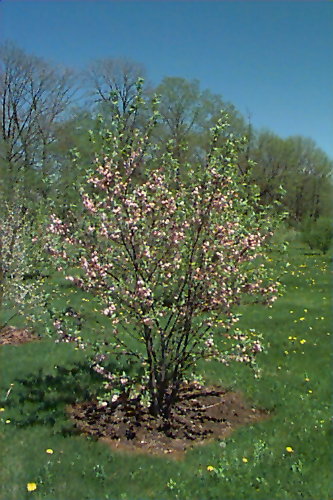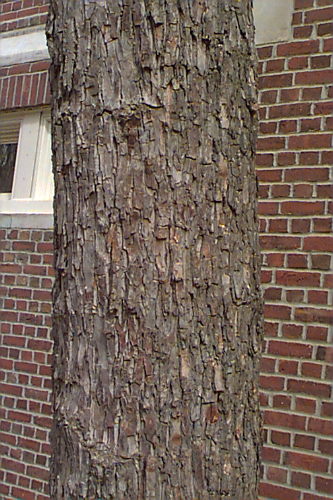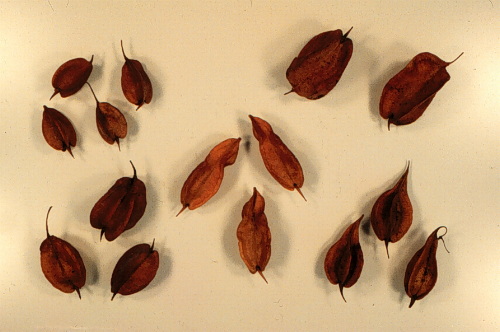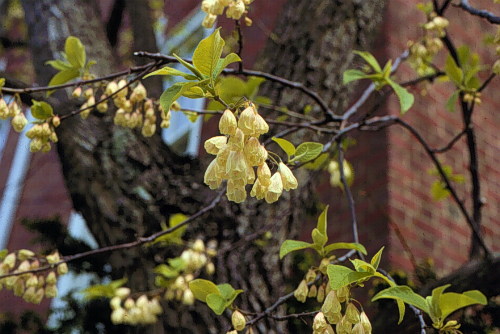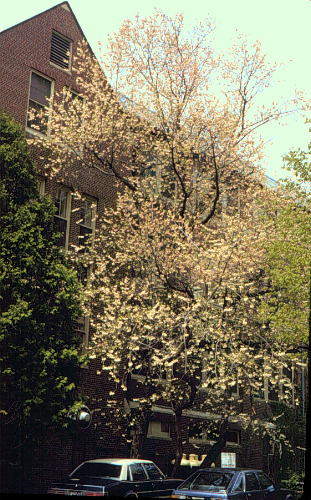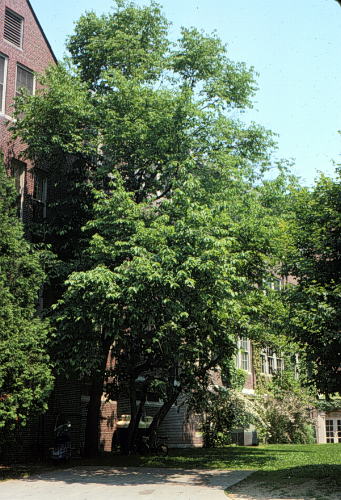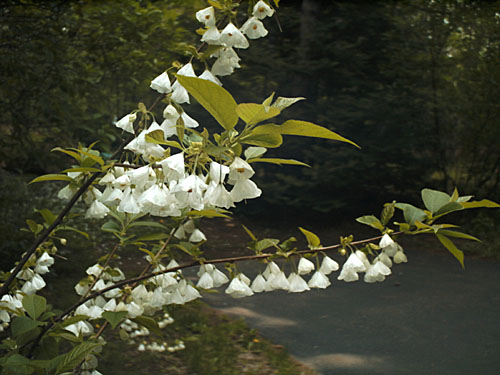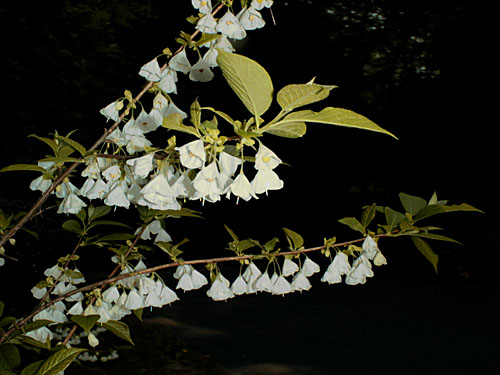Halesia carolina
Carolina Silverbell
Styracaceae
ExpandHabitat
- native to southeastern United States
- zone 5
- in native areas it grows as an understory small tree
Habit and Form
- a small to medium-sized, flowering tree
- reaches 30' to 40' tall
- 25' to 35' wide
- shape is irregular to rounded and broad
- branching is irregular
- branching often begins low on the trunk
Summer Foliage
- alternate, deciduous leaves
- simple, ovate or elliptic shape
- acute tip
- leaves are 2" to 5" long and 1" to 2.5" wide
- margin slightly serrate
- dark green color
Autumn Foliage
- yellow-green
- develops early in the fall
Flowers
- pendulous, white, bell-shaped flowers
- in clusters of up to 5
- each flower is 0.5" to 0.75" long
- flowers are slightly 4-lobed
- bloom time is early May
- floral beauty best appreciated within 10" of plant
Fruit
- interesting four-winged, oblong fruit
- changes from green to tan
- persists into winter
- 1" to 0.5" long
Bark
- attractive, smooth, muscle-like bark
- base color is steel-gray with creamy-white striping
- bark on twigs exfoliates slightly in fine silvery shreds
Culture
- full sun to partial shade
- prefers a moist, well-drained, acid soil
- use container grown material; B&B plants are difficult to establish
Landscape Uses
- for showy spring flowers
- as a specimen
- mixes well with evergreens such as rhododendron
- as a small shade tree
- as a patio plant
- for naturalizing
- looks its best with a dark background
Liabilities
- chlorosis on high pH soils
- twig kill in severe winters
- relatively pest-free
- flowers, although showy, should be viewed at close range
ID Features
- white bell-shaped flowers in May
- 4-winged fruit
- white and gray striped bark
- flower buds slightly larger than vegetative buds
Propagation
- by cuttings
- by tissue culture
- seeds have a complex dormancy
Cultivars/Varieties
'Arnold Pink' - This form features 0.75" long, rose-pink flowers that fade to very light pink. It was introduced by the Arnold Arboretum and is probably a H. tetraptera ssp. monticola cultivar.
'Meehanii' - This unusual form is shrub-like and grows to only 12' tall. The numerous white flowers are smaller than the species and the leaves are coarser and more wrinkled. It is not common in the trade
ssp. monticola (also listed as H. monticola) - A larger, more tree-like form found at elevations of 3000' or more in the southeast, this plant is considered by some to be a separate species. The form is unique, as the plant can grow to 80' tall with one or several main trunks and a conical, bushy crown. The leaves and flowers are larger and coarser than typical H. tetraptera. Most pink-flowered Halesia forms seem to be derived from ssp. monticola. This tree-like form appears to be less tolerant of heat than H. tetraptera.
var. rosea - Increasingly common in the trade, plants offered under this name bear flowers ranging from light rose to very light pink. These pink types may emerge a respectable pink, but usually fade to nearly white as the blooms age. True deep pink-flowered forms, although mentioned in the literature, do not appear available in the trade.
'Silver Splash' and 'Variegata' - These two selections have green leaves streaked and splashed with white or yellow. The former selection arose as a sport at the Tyler Arboretum. Many different clones are included under the umbrella of 'Variegata'.
'UConn Wedding Bells' (also listed as 'Wedding Bells') - A smaller form with a rounded habit reaching 20' tall, this shrubby plant is superior for its more numerous white flowers which are larger than the species and open more fully. The leaves are also somewhat shiny. It was discovered by Dr. Mark Brand in Ohio and introduced through the University of Connecticut.
var. vestita - This is a form of ssp. monticola with pubescent leaves that are more rounded at the base. In maturity the plant maintains a central leader.
